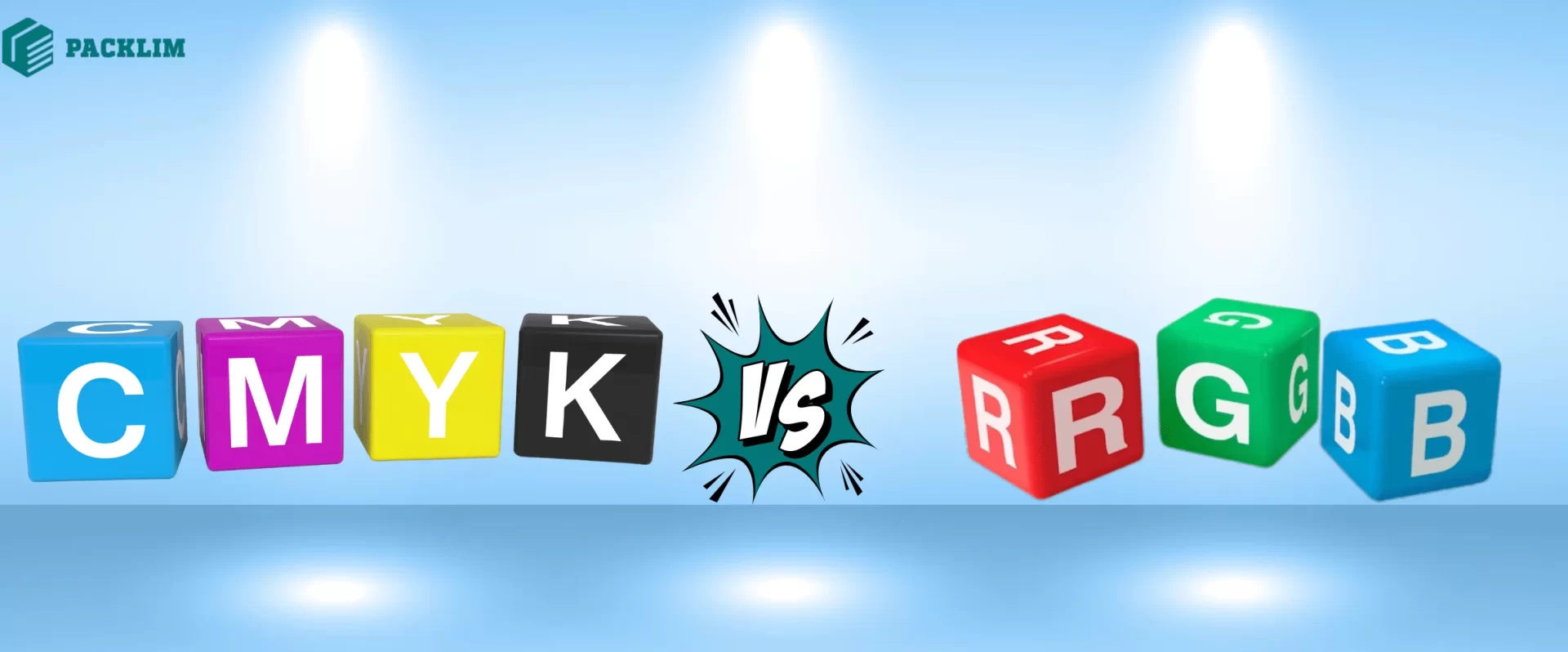
CMYK Vs RGB Printing Differences
For creating visually striking and effective artwork, understand the color model in the world of design. CMYK and RGB are two primary color models that dominate the design landscape. Each color system offers a different purpose. Choose the right one to make a difference in your custom packaging design’s outcome. This blog will explore the differences and applications of CMYK vs RBG. Both color models have distinctive application and strength features. Get informed about the latest developments in these models here.
Knowing CMYK And RGB
CMYK stands for cyan, magnets, yellow, and key black. It is a subtractive color model which is used in printing. This model works by subtracting varying percentages of light absorbed into inks. The color appears darker when applying more ink. It is best applicable for physical products such as posters, brochures, and other materials. RGB stands for red, green, and blue. This color system is used for digital displays like computers, screens, smartphones, and televisions. Both of these models create colors by adding light. The more light you add, the brighter and closer the white color gets. RGB is perfect for anything displayed on a screen, from digital art to web design.
Difference Between RGB VS CMYK color
The key difference between CMYK vs RGB for printing is given below.
- color range: The Cmyk color has a narrower color range when compared to RGB. RGB produces the same brightness and vibrancy. It relies on ink absorption rather than light emission. This limitation makes some colors very bright and neon tones. It further makes it reproduce accurately in print. RGB creates a wide range of vibrant and luminous colors. This model represents colors that are beyond the scope of CMYK. It is a go-to option for digital design work.
- Usage: CMYK is widely used in the printing industry. Any design made for print, such as flyers, business cards, and magazines, can be created in CMYK. It ensures color accuracy when transferred from screen to paper. This feature make this color scheme ideal to be employed in custom fast food boxes, cosmetic and bakery packaging such as custom waffle boxes . On the other hand, RGB is the standard for digital design. It is predominantly used for designing a website, creating social media graphics, and working on digital ad campaigns. It offers the best color representation on screens.
- Conversion: When converting from RGB to CMYK, it creates color loss and alteration. It adjusts the color palette to ensure the final print as to the digital design. RGB is more straightforward than CMYK. The colors appear more vibrant on screen than they will when printed.
- Printing process: The printing process using CMYK involves the layering of four inks to create the final image. The kind of paper used has an impact on this technique. It makes the color consistency a challenge with the printing technique and even the quality of inks. RGB designs are displayed using pixels on the screen. It directly emits light and maintains color consistency in RGB. It does not depend on physical materials with screen settings and calibrations.
RGB Printing Vs CMYK Printing: Which Is More Trendy?
In 2024, the discussion over CMYK and RGB will remain relevant. Some recent comparisons are highlighted for designers:
- Digital Printing Advancements: The advancements have improved color accuracy and range in CMYK. RGB still outperforms CMYK in terms of vibrancy. It achieves near-digital quality in print.
- Cross-platform design: it creates content that functions both online and offline. It understands how to work with RGB and CMYK. It requires careful consideration of how colors will translate between digital and print mediums, often leading to compromises and adjustments in the color palette.
- Sustainable considerations: the choice between CMYK and RGB is more about aesthetics. Printing with CMYK needs resources such as ink and paper. It opts for digital-only designs to reduce environmental waste. This make it ideal for high-qualiy designs in food packaging along with food safety such as for custom burger boxes, pizza boxes and custom hot dog boxes.
- Software: many programs are used for these color methods. The software includes Adobe Photoshop, Illustrator, and InDesign. They offer more accurate color previews and conversion tools. Therefore, these tools make it easier for designers to switch between CMYK or RGB without compromising quality.
- Client Expectations: Now the clients have become more knowledgeable about design. They are more likely to be CMYK or RGB, depending on their use. Designers explain the differences to make the best choice for their clients’ needs.
Tips For Designers About RGB And CMYK
Here are some practical tips for designers navigating between CMYK or RGB:
- Start with the end in mind to minimize the need for conversion and to reduce the risk of color discrepancies.
- Use color proofing to see how your design will look after printing. It helps identify color issues early in the process.
- Run a test print to see how the colors translate from screen to paper.
- Educate clients to prevent misunderstandings and ensure everyone is on the same page.
Conclusion
To conclude this blog, CMYK and RGB are two primary color models that dominate the design landscape. Choose the right color method to make a difference in your design’s outcome. Both color models have unique application and strength features. They ensure that your designs remain vibrant, accurate, and effective across all mediums.
